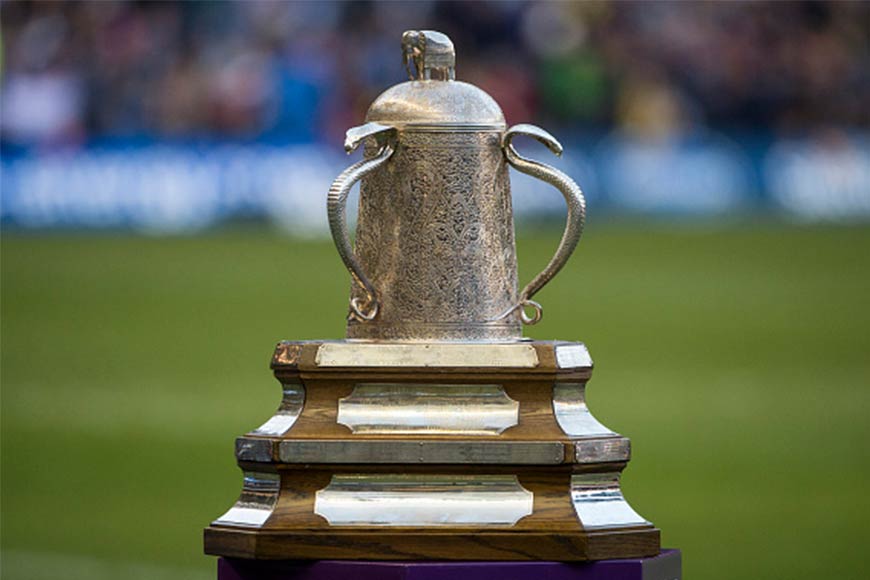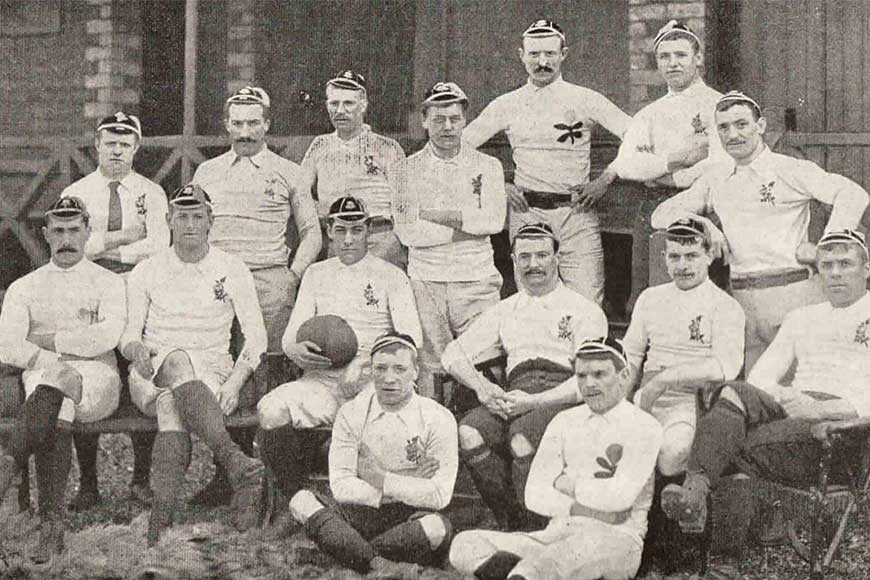How a rugby trophy was named after the City of Joy

Those who follow the sport of rugby (not a very large number in India yet, sadly), will know of the Six Nations Championship. For the uninitiated, this is the annual international men’s rugby union competition between England, France, Ireland, Italy, Scotland, and Wales. Such trophies as the Millennium Trophy, Centenary Quaich, Giuseppe Garibaldi Trophy, Auld Alliance Trophy, and the Doddie Weir Cup are awarded under the umbrella of this championship.
But the oldest of these trophies is what concerns us, because that trophy is named after our city! Yes, the oldest trophy awarded under the Six Nations Championship banner is called the Calcutta Cup. And it goes to the winner of the England vs Scotland contest.
Originally crafted in India, the trophy is decorated with three cobras and an elephant, and was first competed for in 1879, though that match ended in a draw. The following year, England became the first holders of the Calcutta Cup, beating Scotland in Manchester.
But we’re getting ahead of ourselves. Why is this trophy, which is awarded to one of two non-Indian teams, for a sport unfamiliar to most Indians, named after Calcutta?

Well the story goes that the seeds of the England-Scotland contest were sown in Calcutta on December 25, 1872, when an exhibition match was played between the two nations on the occasion of Christmas. Everyone concerned had so much fun that they repeated the contest a week later. Subsequently, they decided that they needed to do this at regular intervals, and some of the more passionate fans came up with the idea of forming a rugby club.
Thus in January 1873 was born the Calcutta Football Club (the name derived from rugby football). And it is this club which later merged with the centuries-old Calcutta Cricket Club to form the Calcutta Cricket and Football Club (CCFC), the familiar landmark near Kolkata’s Gurusaday Road crossing today.
At the very outset, the Calcutta Football Club became a member of England’s Rugby Football Union in 1874. However, though initially popular, the club soon suffered a drop in membership. One reason for this was that the Indian climate was not suitable for a sport as physically demanding as rugby. And the other was that the club apparently decided to shut down the free bar!
Also facing competition from sports such as tennis and polo, the remaining members decided to disband the club. However, wishing to keep the name alive, they gathered the club’s funds, which were in silver rupees, had the silver melted down and made into a trophy, which they presented to the Rugby Football Union in 1878, on condition that it be competed for annually.
Accordingly, the Calcutta Cup was first competed for in 1879. The current holders are England, who have won the cup 71 times to Scotland’s 40.
The original trophy was made in India, though the one now awarded is a replica. It stands approximately 18 inches high, and its finely engraved body has three King Cobra snakes forming the handles. The domed lid is surmounted by an elephant. On the wooden base is inscribed the words, ‘THE CALCUTTA CUP’.
The Museum of Rugby in Twickenham, England, currently houses the original Calcutta Cup. However, its advanced age and fragility means that it can no longer be used in competitions, or even taken out of its protective case.
In case you thought the story of the Calcutta Cup ended here, you would be wrong! There’s a second Calcutta Cup in existence, the competition for which is very much staged in the city of its origin. And to this mix is added a small village in North Bengal, too. Every day during training season, visitors to Kolkata’s famed Maidan may well be treated to the sight of a group of young boys and girls dashing around practising rugby football, right opposite American Centre. But we’ll keep that story for another day.









